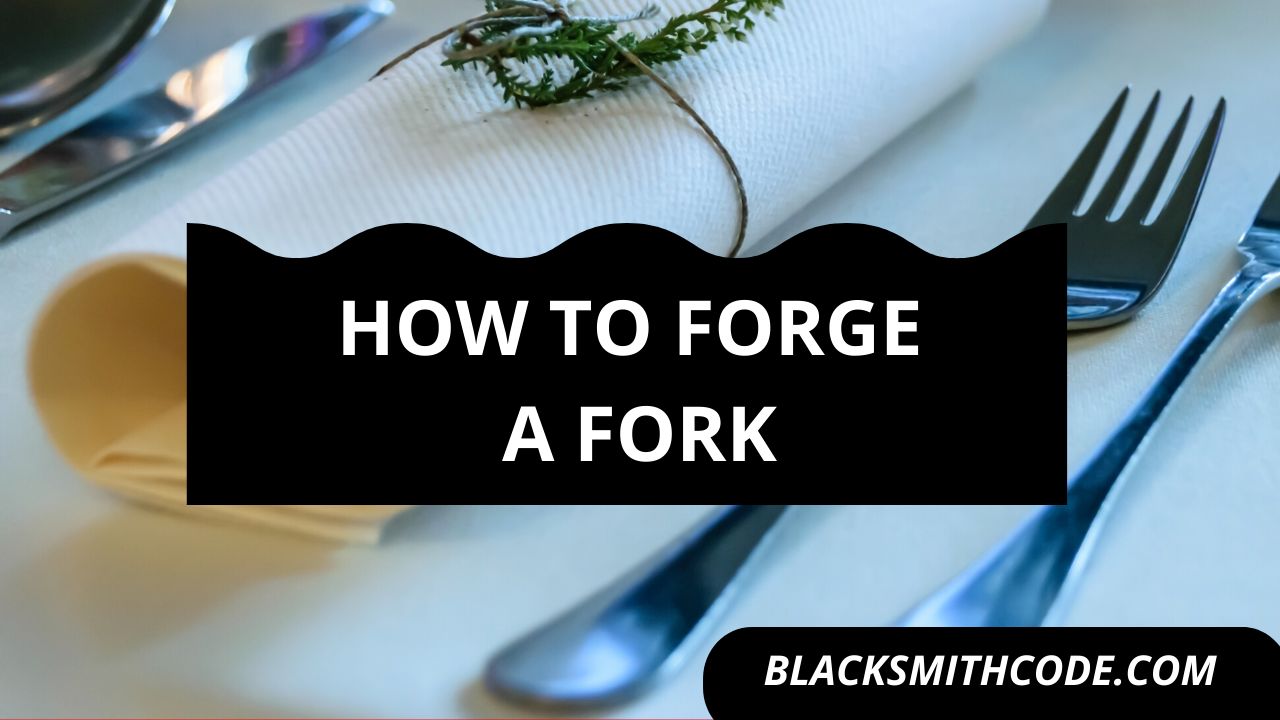Many questions flood your mind whenever a topic like this comes up; have you ever answered anyone of them? Don’t worry; we will answer most or all of the questions by telling and showing you how to forge a fork.
The fork is a small utensil with a pronged end used in feeding, especially when eating handy food substances. The fork’s primary usefulness is to pick food particles, but it can be challenging to take liquid materials.
Forks are one of the most used types of utensils alongside the spoon and the knife. In restaurants, fork and knife are mostly presented for feeding, leaving the spoon out of the equation.
Forging a fork also requires steps, but these steps are simple and straightforward. Follow the steps below to form your fork.
Instructions
Step 1: Get Your Material
The material you use should be a very durable metal. You should also not use a metal that can be harmful to humans; materials like lead should be avoided. You can use durable metals like steel to forge your fork.
Step 2: Design
Sketch your plan for the fork. The model shows the way you want your fork to look like at the end this project. It is advisable to make use of simple design as a beginner, and as you become perfect in forging, you can switch to a more complicated design for your fork.
Step 3: Heating
Before you can perform any task using your metal, you have to heat your metal to a very high temperature. Heating the steel to a very high temperature increases the malleability of the metal.
Pro Tip
The higher the malleability of metal, the easier it is to forge. Malleability defines the ability of a metal to be able to take different shape under pressure.
Step 4: Cutting
While the steel is still hot and highly malleable, you should reduce the stock steel according to your design. It would help if you cut the steel using a chisel, wheel cutter, hacksaw, etc. Please, use a more convenient tool. The use of a knife is recommended for this purpose. It would be best if you cut the fork neatly and accurately.
Step 5: Beating
Beating a metal into the desired shape is necessary and essential in some forging cases. It would be best if you beat the steel into the way you want. Beating the steel into the desired shape requires professionalism and also requires precision in targeting.
Step 6: Smoothing and Grinding
There is no doubt that the fork’s edges will be rough and won’t look presentable. You have to grind and smooth the sides of the fork to make it right.
Pro Tip
You can use a standard grinder or an angle grinder to carry out the process and smooth the fork’s edges. Also, you should grind and smooth the tongs of the fork.
Step 7: Reheating
This action might not be necessary because you are forging a fork, and a fork doesn’t need to be hard and durable. Nevertheless, the fork should not be soft and should be sustainable to last a while. You should place the fork into the forge and heat it until it becomes red hot. It would be best if you raised the temperature of the fork for an extended period.
Step 8: Quenching
After heating the fork, you should quench the fork slowly in a container full of liquid. The liquid commonly used by most people for quenching is oil and water. These two liquids are recommendable because they have characteristics that show their efficiency in quenching.
Step 9: Adding Finishing Touches
After quenching the fork, you should check and add some finishing touches to the crotch. When the fork has cooled down, you will be able to see where in the fork needs adjustment. If it requires smoothing and grinding, you should grind and smoothing. If it involves beating, you can heat the bend a little and hammer slightly into the right shape.
Step 10: Polishing
Polishing the fork is the finishing part of the forging. You should polish the fork very well as this gives it a good outward appearance. You can clean the fork using various means, but it is best to use the most suitable one for your fork design.
FAQs on How To Forge A Fork
Question
How long can it take to forge a fork?
Forming a fork can be tricky at times. But it doesn’t take much time to create a fork ultimately. If you have all the materials you need intact and ready; you won’t take much time to carry out the project.
If you also make use of the appropriate tools, you can do it with your forging within a couple of minutes. It takes around 30 to 35 minutes to forge a fork. But for beginners, it might take a long time depending on the person forming it.
Question
Is there a specific type of forge to use while forging a fork?
You can make use of any forge provided that it provides enough heat you need to forge. Preferably, you can make use of a forge that you can easily control the temperature created. Using this type of forge will enable you to be able to handle your work.
Question
What is the best metal to use to forge a fork?
You can make use of any metal to forge your fork, provided the metal doesn’t pose a hazard to human health. There are different types of metal you can use, but the best metal to use is steel.
Video on How To Forge A Fork
Precautions
It would be best if you took the following safety precautions when forging a fork.
- You should, at all times, make use of the suitable tools.
- You shouldn’t make use of broken instruments.
- It would be best if you always put on a protective outfit.
- It is essential to be careful when dealing with metals from a forge. They might not look red, but they are still hot.
- You should make use of crucibles to hold a hot object.





